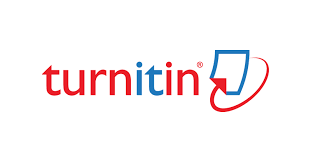Smong: Kearifan Lokal Sebagai Bentuk Warisan Budaya Mitigasi Bencana Masyarakat Simeulue, Nanggroe Aceh Darussalam
DOI:
https://doi.org/10.30656/jdkp.v4i2.7406Kata Kunci:
local wisdom, disaster management, pre-disaster response, “smongâ€.Abstrak
Indonesia is often hit by disasters but disaster management has not been optimal. The focus of disaster management is only on post-disaster. Meanwhile, a post-disaster management approach alone will not be able to control the impact of a disaster early. This paper aims to analyze improvements in disaster mitigation for responsiveness in dealing with disasters both pre, during and post-disaster using local wisdom in the form of the "Smong" cultural heritage originating from Aceh. The research method uses descriptive qualitative. Data collection through interviews as primary data and literature study as secondary data. The research results show that disaster management is known to include pre-disaster, during disaster and post-disaster. Pre-Disaster Response Attitude as a state of mind is known in social change and community development. State of mind becomes a distinctive nuance that depicts society's social values. State of mind also informs about social changes that have occurred on a broad or narrow scale in the development system that has been experienced. Local wisdom is a form of state of mind. Local wisdom in Simelue is a continuous community learning process as communication in the face of disasters. These skills form pre-disaster response attitudes and are passed down from generation to generation. The results of the internalization of "smong" values ​​have been a blessing so that almost all residents of Simeulue Island achieved fantastic safety during the 2004 tsunami.
Keywords: local wisdom, disaster management, pre-disaster response, “smongâ€
Referensi
Nurdin, R. (2015). Komunikasi dalam Penanggulangan Bencana. . JURNAL SIMBOLIKA Research and Learning in Communication Study, 1(1).
Siregar N. (2017). Implementasi Making Aceh Safer Trough Disaster Risk Reduction in Development (DRR-A) Project Oleh United Nations Development Programme (UNDP) Dalam Upaya Mengurangi Risiko Bencana di Aceh 2009-2012. EJournal Ilmu Hubungan Internasional, 5(3), 775–788.
Stanley Jaya Kumar, G. (2000). Disaster management and social development. International Journal of Sociology and Social Policy, 20(7), 66–81. https://doi.org/10.1108/01443330010789007
Kirschenbaum, A., & Vigoda, E. (2002). The organization of chaos: the structure of disaster management (Vol. 99). PUBLIC ADMINISTRATION AND PUBLIC POLICY.
Buku:
Juliantoro, D., & Sunanto, H. (2000). Menggeser Pembangunan, Memperkuat Rakyat: Emansipasi dan Demokrasi Mulai dari Desa. Yogyakarta: Lapera.
Moleong, L. J. (2011). Metodologi Penelitian Kualitatif Edisi Revisi. Bandung: PT. Remaja Rosdakarya.
Sulistiyani, A. T. (2004). Kemitraan dan model-model pemberdayaan. Yogyakarta: PT Gava Media.
Supriatna, T. (2000). Strategi Pembangunan dan Kemiskinan. Jakarta: PT. Rineka Cipta.
Tjokrowinoto, M. (1995). Teori Pembangunan Sebuah Analisis, Konsep, Arah dan Strategi. Yogyakarta: Tiara Wacana.
Media Massa:
Kasali, & Rhenald. (2005, January 24). Smoong yang Selamatkan Warga Simeulue . Kompas.
Kumalahadi. (2005, January 3). Pelajaran penanganan Bencana Tsunami. Kedaulatan Rakyat.
Suryopratomo. (2005, January 1). Ketika Kawanan Burung Putih Berarakan ke Tengah Banda Aceh. Kompas.
Wawancara:
dr. Hanif. (2005, January 31). Wawancara Kepala Puskesmas Simeulue Timur dan Kepala PMI Kab. Simeulue, Senin 31 Januari 2005, jam 11.30-12.00.
Drs. Dharmili. (2005, January 1). Wawancara Bupati Simeulue (dr. Hanif). Kepala Puskesmas Simeulue Timur dan Kepala PMI Kab. Simeulue, Senin 31 Januari 2005, jam 11.30-12.00.
Tejo Wijanarko. (2005, January 31). Wawancara Kapolres Simeulue (Tejo Wijanarko), Senin 31 Januari 2005, jam 15.30-16.00.
Unduhan
Diterbitkan
Terbitan
Bagian
Lisensi
All articles in Jurnal Desentralisasi dan Kebijakan Publik (JDKP) can be disseminated provided they include the identity of the article and the source of the article (Jurnal Desentralisasi dan Kebijakan Publik). The publisher is not responsible for the contents of the article. The content of the article is the sole responsibility of the author
Jurnal Desentralisasi dan Kebijakan Publik (JDKP) is licensed under a Creative Commons Attribution-ShareAlike 4.0 International License.










.png)
.png)







_new12.png)

